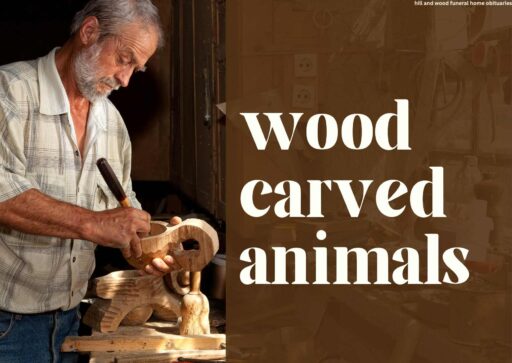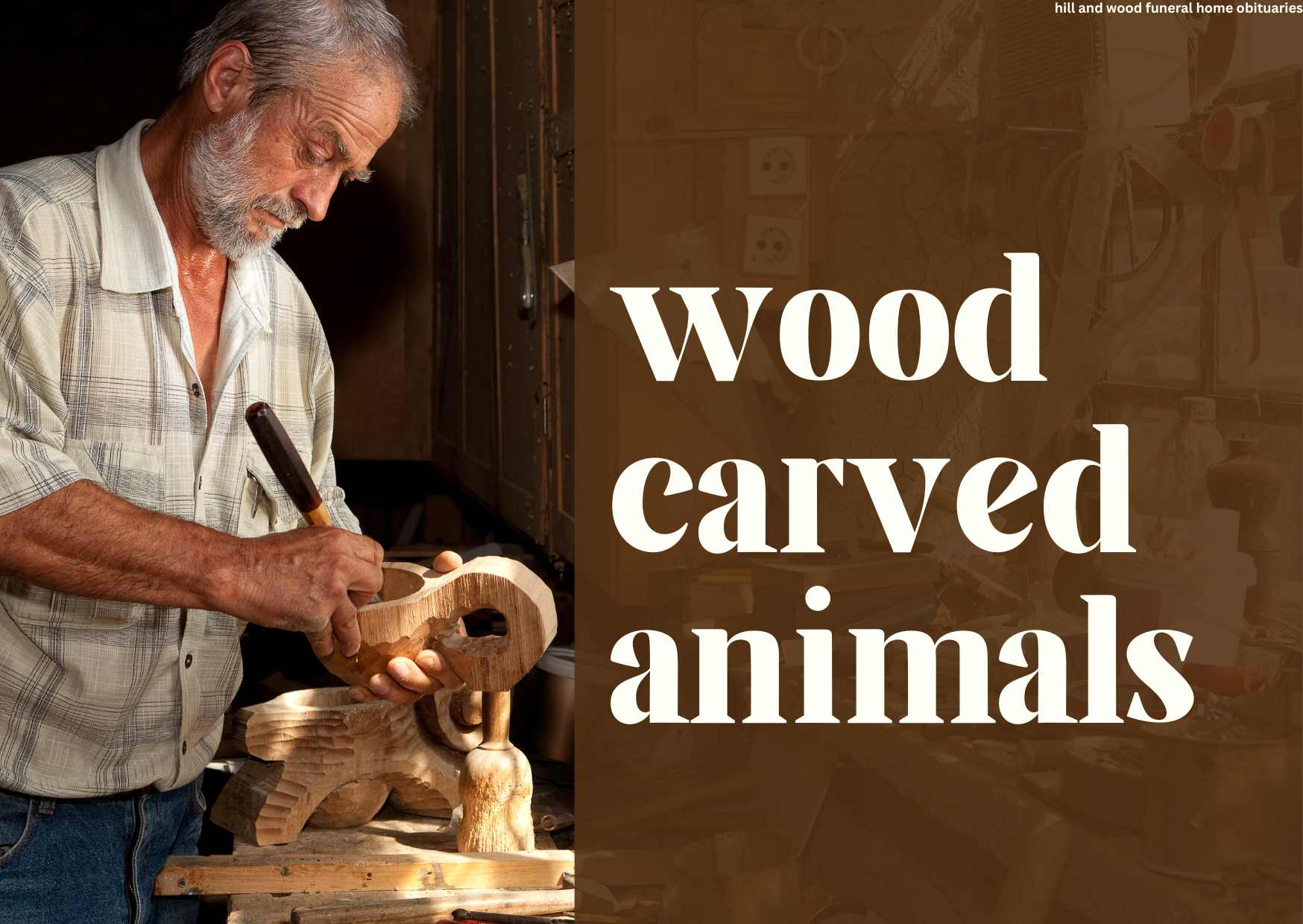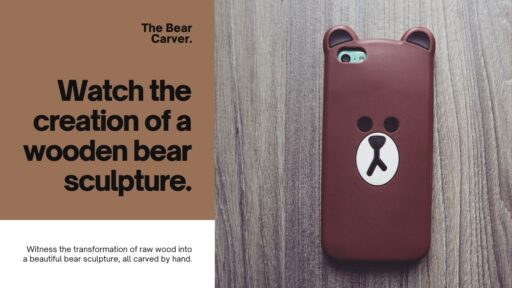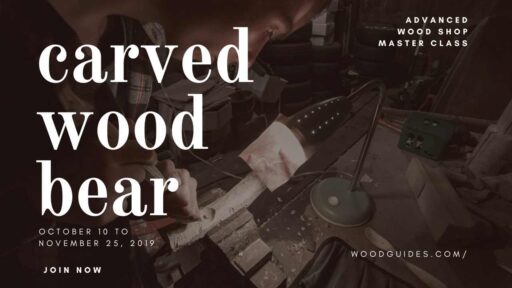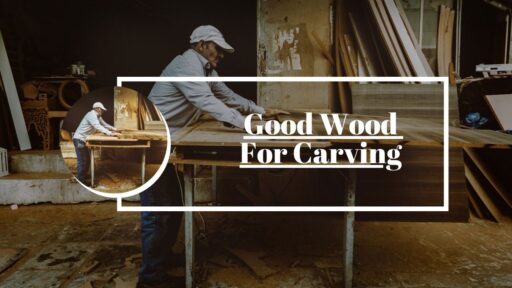For many centuries now, figural Wood Carved Animals sculptures have attracted the admiration of artists and art lovers. Their intricate designs are a work of genius that is done with much precision. These wooden masterpieces show great skill and talent. They also hold a timeless beauty that continues to captivate us year after year. This article will tell you about the history of wood carving. It covers the types of wood used, the techniques employed, and famous wood-carved animal sculptures.
It also covers their symbolism, how to maintain them, where to buy and find them, and their value and appreciation. Come along with me on this journey into the amazing world of Wood Carved Animals-carved animal sculptures.
Introduction to Wood Carved Animals
Wood carving is the oldest form of artistic expression in existence today, and it can be dated back thousands of years. It refers to a careful process involving shaping and designing woods into animal forms, among others. They are pretty. But they are also important artifacts. They reflect a culture. They can depict many animals. These range from grand elephants to graceful birds like eagles. They also depict fierce lions, for example. Each piece brings out the character or personality of the animal.
A History Etched in Timber
Wood carving animals has been around for ages—not just a contemporary practice taking place over a few decades. The root probably lies in prehistoric cultures where humans observed wildlife so closely and adored it in their own ways. The craft has changed over time. It reflects cultural and technical advancement in art. This makes it useful for understanding past generations’ values about nature and life (Lowes 3). The carvings depicted wildlife. They were used in many ways. They were used as symbols in the religions of indigenous people. They also decorated palaces with complex wooden artwork at different times.
A Tradition Carved in Culture
There is an unsaid language through this kind of art form, speaking volumes across generations using wood-carved animals. Animal symbols come with different significance for each region. Therefore, these carvings act as a vehicle of culture. Many tribes have animal sculptures to protect their homes. Others show respect for nature in other ways. The traditional woodcarvers incorporate these principles in their work. This makes every piece depict some part of our cultural past.
Different Types of Wood Used in Carving
The type of wood selected plays an important role in determining how well a particular sculpture will look after being carved from wood. Different types of wood have distinct features that can either enhance or hinder the artist’s intended vision. Some of the common wooden materials used during carving include mahogany, walnut, oak, cherry, and ebony, among others. Each tree species has its own color, grain, and density. These traits affect the appearance and lifespan of sculptures made from them. In this case, the choice is just personal preference. An artisan makes it based on things like availability, machinability, and the desired effect.
Techniques Used in Wood Carving
Wood carving needs skillfulness, accuracy, and calmness. Chip carving is characterized by removing small chips from wood to form intricate patterns and textures. Relief carving consists of engraving on a flat piece of wood, creating depth or dimension. Sculptural carving entails forming wooden materials into three-dimensional figures, for instance, animals. The techniques used can differ depending on the intentions that are to be achieved by employing the artists’ style.
Famous Wood Carved Animal Sculptures
Wood has been a favorite medium in sculpture throughout history, and many famous animal sculptures have been carved out of it. An example is the “Bird in Space” sculpture by Constantin Brancusi. It is in abstract form and captures the grace and smooth lines of birds in flight. Another famous wood-carved animal sculpture is “Elephant” by David Nash. It shows the wood’s natural beauty and is of an elephant. The elephant was meant to be as striking as possible but with life-size proportions. These sculptures and many others are iconic representations of wood carving.
Symbolism and Sculpture
Art has always been a means for artists to convey what cannot be expressed in words itself. But, for wood-carved animals, these features often have more meaning than meets the eye at first glance. Other meanings lie beneath them. Animals embody much of the human experience. They show strength, grace, wisdom, and companionship, among other traits that vary by species.
The Craftsmanship of Storytelling
Some carvers mimic animals’ shape accurately. You’d think they have come alive. Others take creative liberties with them, infusing narratives into every creation. These creatures are more than animals. They are members of a wordless tale that can let someone imagine a different viewpoint. This trait is common in wood-carved animals. Each piece becomes a good conversation topic at home.
Exploring Themes through Animal Carving
The animal kingdom offers a great playground for the carver’s imagination hence, there are innumerable themes and designs that are found in wood. Each creature from the regal majesty of the lion down to the enigmatic charm of the owl has a unique appeal that has been utilized by artists across the world. Such themes cut across cultures, therefore being a universal language understood by many people globally.
Regional Flavors and Unique Styles
Woodcarvings have regional styles, much like dialects, which exist among languages. These differences result from various factors, including local ecology, cultural preferences, and even individual craftsmanship. Here, each piece is imprinted with where it comes from, be it the sinewy elegance of a tropical mahogany carved serpent or the sturdy form made of the dense northern forest woods of a bear.
How to Care for Wood-Carved Animal Sculptures
Proper care and maintenance are required to preserve the beauty and longevity of wooden carved animal sculptures. These sculptures should be kept away from direct sunlight as it can fade them or cause damage to their wood. Regular dusting with a soft cloth or brush is advised to eliminate any dirt or debris. Wood can be protected by applying a thin layer of polish or wax, which also enhances its natural glow. Moreover, these sculptures should not be placed in high humidity conditions or areas where there is constant fluctuation of temperature so that the wood does not warp or crack.
Building a Gallery of Arboreal Beasts
The collectors of wood carvings of animals turn out to be curators of their personal museums. Every single piece has been made by different artists; hence, they create a picture that reflects the diverse nature of the world’s artistry. The collector, therefore, becomes a custodian who sees to it that these wooden creatures get preserved and enjoyed for the years to come.
A Showcase of Nature’s Splendor
The significance of a collection goes beyond being an aggregation but is found within stories that are contained among them. A well-displayed set of wood-carved animals feels like walking through a forest or going to see animals in zoos because with each turn one makes, there is something new happening around them. This, therefore, means it is not only about an artist’s showpiece but also about animal life woven in various woods represented by him/her.
Where to Find and Buy Wood-Carved Animal Sculptures
Various places have wood-carved animal sculptures, including art galleries, museums, and online marketplaces. Art galleries usually have a showcase for hand-picked sculptures made from solid wood. They belong to famous artists. Museums might have permanent exhibits and temporary shows from different places and times. These shows feature wooden wildlife figures.
Online marketplaces offer buyers access to worldwide selection by numerous artisans who do this craftwork from their studios at home, thereby making it a much more convenient option. Before buying such pieces, it is recommended to check the background of the artist, read reviews, and confirm whether the pieces are genuine.
The Value and Appreciation of Wood-Carved Animal Sculptures
Wood-carved animal sculptures are not just beautiful but also have great worth. Usually, these sculptures can be passed from one generation to another as heirlooms. Intricate designs and accurate detailing characteristic of such sculptures take time and require skill. On top of that, they contribute to their value. Furthermore, wood carving has cultural traditions, hence being a relevant factor in appreciation and demand for these works. Owning this sculpture means owning a piece of art, history, and culture altogether.
Credit: Art Wood Carving
FAQs
Are wood-carved animals expensive?
The price range for these wooden animals depends on how big they are made, the intricacy of designing them, the reputation of the sculptor, and the type of wood employed for each piece. Thus some carvings may be pocket friendly whereas others because of rarity or historicity may attract very high prices.
Can wood-carved animal sculptures be displayed outdoors?
Wood-carved animal sculptures should not be displayed outside as it may lead to the destruction of wood. If you’d like to put a wood-carved animal sculpture on your lawn, pick a type of timber that is suitable for outdoor purposes and protect it from weather elements.
Can I have someone make me a special wood-carved animal sculpture?
Absolutely, there are many artists who create custom-made wood-carved animal sculptures. With this option, you are able to obtain an exclusive piece in accordance with what you want, whether it is an individual type of creature or a specific size. The artist can be contacted directly so that one’s vision can be discussed and inquiries made about commissions.
Conclusion of Wood Carved Animals
Wood Carved Animals are more than ornaments. They honor nature’s creatures and the art forms that bring them into our homes. Contemporary artists with wood have stretched boundaries and reimagined ways to represent animals. They want to add warmth to their spaces. They want to bring outdoor beauty to their homes. They want to collect unique handmade items. They cannot ignore wooden animal carvings.
These Wood Carved Animals masterpieces embody other qualities such as patience, precision, and practice, among others, besides being creations of creative minds. These wonders in timber deserve a space in your life and home. They are one among craft history survivors and one more silent evidence of the shared bond between humans and all creatures.

